Mad sports fans meeting Richard Barclay for the first time might find themselves regretting the fact he has become a captain of industry rather than the captain of their favourite team. For while every company head knows you need good people behind you, few emphasise the need and joy of teamwork with quite the enthusiasm Richard does. It permeates every decision the CEO of Manila North Harbour Port Inc. in the Philippines makes and every echelon of his business. “We always look at how we can deal with issues so people can do their job better,” he says. “You can’t have people talking in corridors. If they are, it means they’re upset about something. When I have a management meeting, I believe everyone should feel free to participate. My message is always: ‘Say what you need to say here and we can debate things, but when we walk out of this room we must all be united’. That’s the attitude I like to instil.”
Richard is quietly spoken and courteous, his speech littered with words like ‘respect’, ‘friendship’ and ‘kindness’, the antithesis of business leaders in brash reality TV shows. Encouragingly, this gentle approach has resulted in incredible success both during his career in general and especially since arriving at North Harbour and beginning its modernisation and development. In the past 5 years alone, the company has seen massive growth in rolling cargo — from 15,000 to 50,000 cars a year and in TEU, which has almost doubled from 656,000 to 1.2 million. This is on top of the 1.8 million tons of non-containerised cargo and about 1.2 million passengers the port also deals with each year. New deep-water berths have been constructed, the length of the quay has been extended, and North Harbour is the first domestic port in the country to install the new Navis N4 operating system.
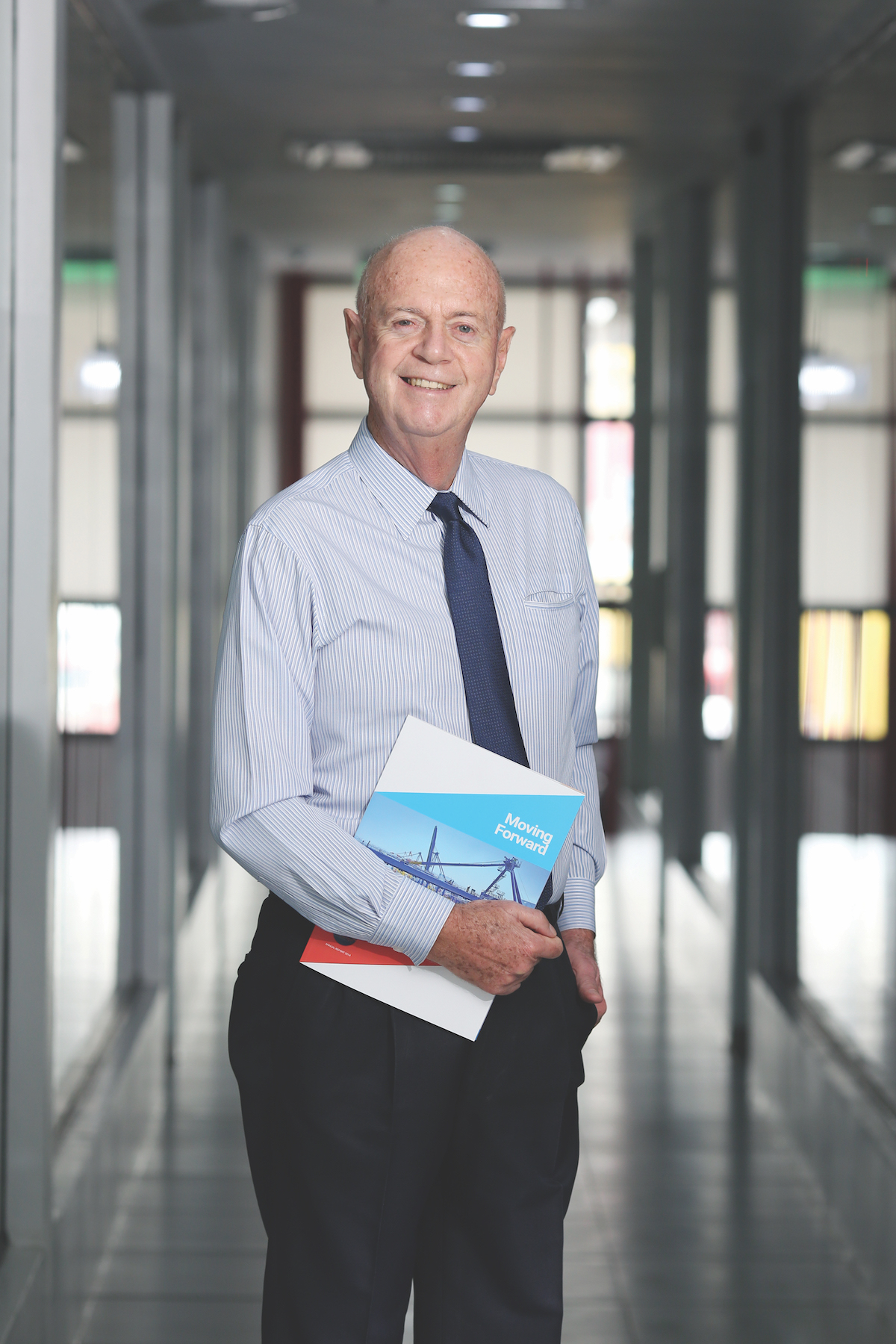
The new terminal is the most modern air or sea terminal in the country.
Passengers, meanwhile, are thrilled by the port’s new terminal. Richard is delighted with it too, not only because it’s the most modern air or sea terminal in the country, but also because it fulfils a need for its customers. “We’ve put everything into it. We have all the latest X-ray equipment. There’s a playroom which the kids love, a multi-faith prayer room, a nice concession area, and it’s fully air-conditioned. There’s also a safe, secure waiting area, because sometimes passengers from the provinces arrive 10–12 hours before their departure.” He’s the first to say that the port isn’t in the prettiest area of Manila and so not really suitable for cruise liners but, he says, the Aquarius team used it for its maiden voyage and was very happy with what they experienced.
Harbour master
Richard’s background saw him spend time at sea as a master mariner before studying at the University of Wales in Cardiff where he earned a Bachelor of Science Degree in Maritime Commerce. He was then employed by the Australian National Line — a domestic port operator and shipping line. “At the time, it was making decisions to move into foreign trades, so that was fantastic experience that’s hard to get.”
One of Richard’s roles involved regular travel to East Asia and South East Asia, as the company needed to ensure it had sufficient facilities and back-up services to facilitate its developing trade, which further fast-tracked his understanding of the international shipping business. Despite continuing to move up the ladder, and occasionally being lured back to work for existing businesses, at 34, Richard formed his own consulting, forwarding and service company. He was eventually bought out by the P&O Group but kept on in a management position. When they invested in the Philippines South Harbour in Manila, he was asked to look after that, impressing all stakeholders as they moved the market share from 15 to 40%.
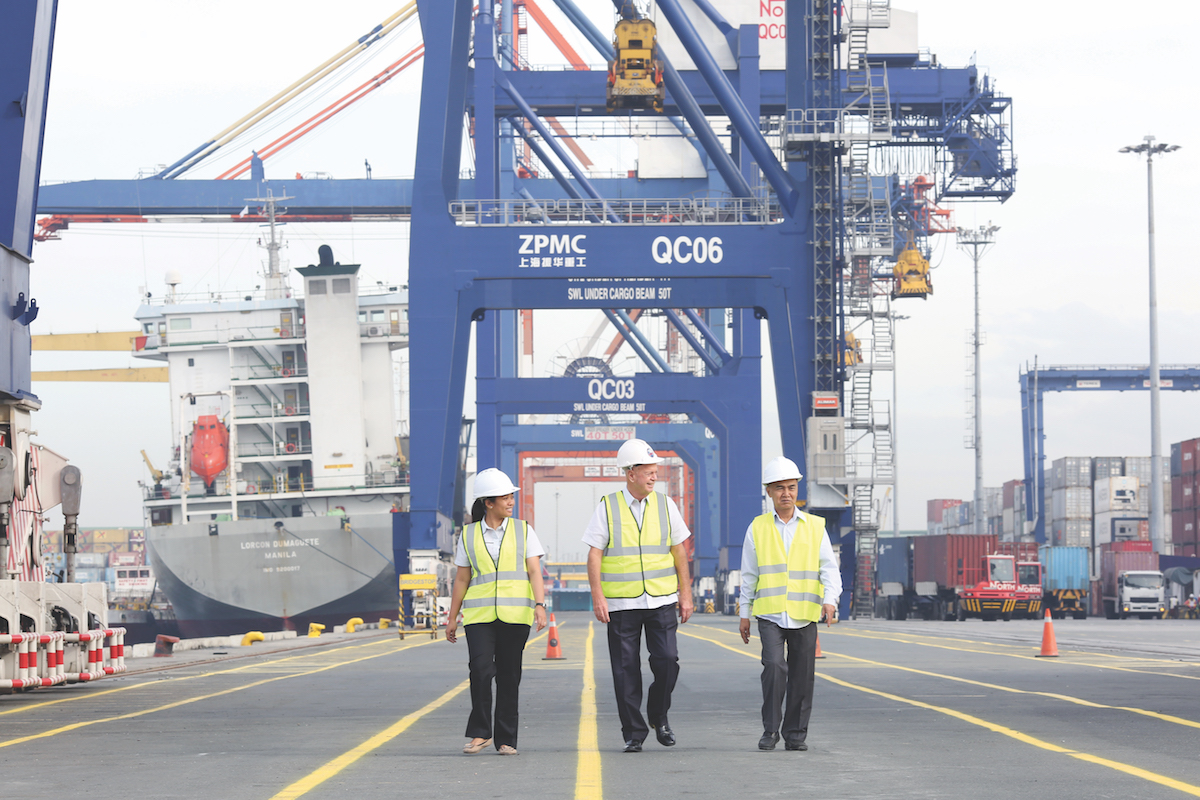
During this time, says Richard, he made many friends in the shipping industry. He’s obviously much liked and respected by competitors, his shareholders and those he manages. It’s meant support from all directions and perhaps explains that, no matter what challenges he’s faced, Richard’s always relied on good people to help him get there and has loved going to work. The North Harbour job was offered to Richard after shareholders asked him to have a look at the terminal and its modernisation plans. It was a big task. North Harbour is the busiest port in the country, with about 4,000 ship calls a year, so it couldn’t simply be shut down while construction took place. It had to continue operating. The new business and development plan also had to have the support of all stakeholders from shipping lines to the Philippine Ports Authority. “Our first major contract was awarded in January 2012. To achieve what we have, we needed good cooperation all round, all stakeholders working together to get the transition through.”
Cooperation all round
Complying with concession agreements while doing the modernisation has been the team’s biggest challenge. “You must ensure you provide the level of service all stakeholders expect and get their input on how the port should progress. The other challenge was putting training in place as we grew. We needed 2 ½ times as much equipment — cranes, tractors, trailers and all the other support.” As you might expect, he says he had a very good team to deal with that and also to talk to the unions and merge them into one. “The team here knew that people needed to be able to go anywhere in the port to work; they worked very well with the unions. We’ve been able to give their members a good career path so they can enjoy promotions, and they were in agreement with our long-term concerns, such as reducing the number of accidents we have and driving equipment more efficiently. They wanted to improve as well and had the right attitude. There was never any conflict; everyone wanted to help one another to be better.”
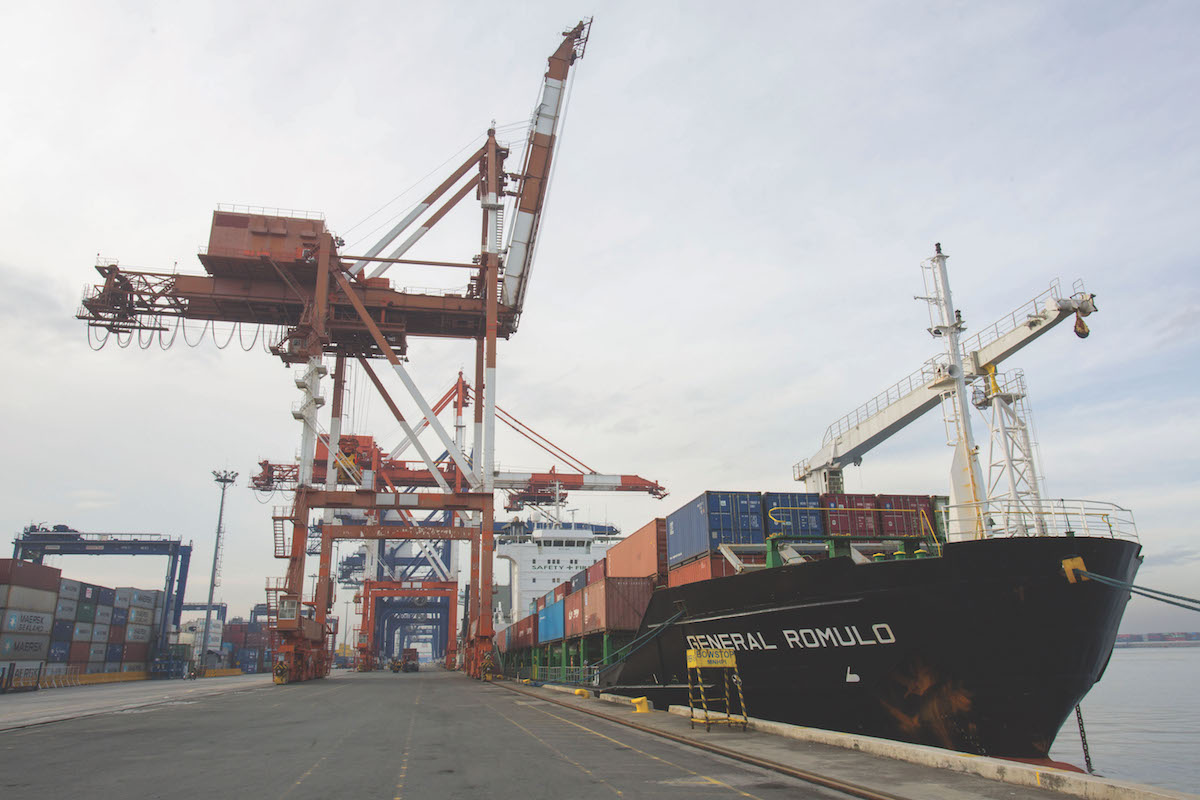
As Richard talks about his team, it’s clear he includes absolutely everyone who has any part in the running of the port. For example, one of the things he’s proudest of is the way North Harbour has increased productivity. “That’s in 2 forms: at the ship itself and at the gates, such as how long the trucks have to wait at the gates without congestion and turnaround. That requires a very close understanding and program of activities with all stakeholders. But I believe the truck drivers are like ambassadors for us: they’re the ones who’ll suffer if they have to wait and queue for a long time.” Ship turnaround times are also crucial for the productivity in a busy port, and Richard and his team have improved that by constructing deeper water berths so that departures and arrivals are not so reliant on tides. Previously, the berths were minus 5 or 6 metres. Now, as they develop, they’re taking them to minus 10 and eventually to minus 13. “We have to redesign the berth itself because we’re a pier-type operation. By the time we finish the development in 2021, we’ll have 1.7 kilometres of continuous quay length.”
Empathy, regard and respect for community
It goes without saying that Richard wants everything to be the best it can be. Security, as with any port, is a major issue, so North Harbour uses a local company working in conjunction with G4S, one of the largest global security companies. “We wanted all stakeholders to know we were serious about health, safety, security and environment.” Another important consideration he values is corporate social responsibility. “We have dental and medical programs here, a nice clinic, and we go out into the community to participate in tree planting. We often get requests from local councils for support in other work, and it’s very rare for us to say no. We might have to program things, but I can’t think of one instance where we haven’t helped when asked. It’s important to be an integral part of your local community.” To that end, Richard and his wife also bought a college franchise in a run-down area that now schools 1,800 pupils and offers many scholarships. “I think education is so important, the most important weapon against poverty. And you need good people to work for you as well, so it works both ways. My wife runs it like a big family,” he adds.
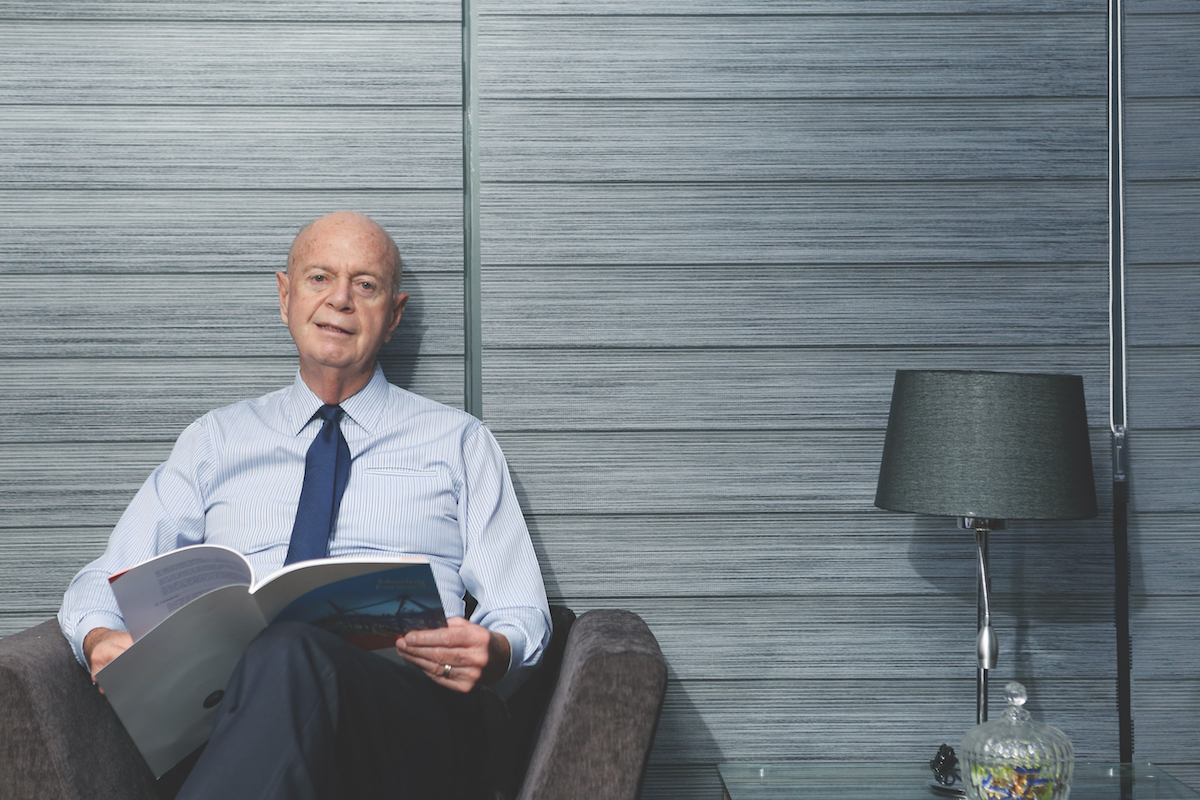
“I can’t think of one instance where we haven’t helped when asked. It’s important to be an integral part of your local community.” – Richard Barclay
This empathy, regard and respect for community is something that’s permeated other decisions, like the port’s new halfway house for victims of human trafficking. “We held a forum with the Human Trafficking organisation to build something they’d feel comfortable with and launched it about a year ago. It’s a nice facility but for a terrible cause, because no-one likes to think human trafficking even exists. They’re taken there when found and given shelter and counselling before going to a rehabilitation centre. It’s not a normal thing for ports, but when you identify something that shouldn’t happen, then you must take action. I was there for the launch and spoke to some of the victims, trying to find common ground that would not be too sad for them. I feel for them very deeply.”
Richard showed that same respect for the informal settlers around the port. They too had to be relocated because they were living on harbour ground where development needed to happen. “There were about 768 informal settler families, 20 karaoke bars, and about 50 informal canteens,” says Richard. The karaoke bars have now gone and the relocation has been peaceful. About half have already found new homes, and it’s expected the remainder will have been rehoused by July this year.
How much longer does Richard see himself staying at the helm of this harbour? “So long as I’m healthy and the shareholders would like me to be here, I’ll stay, but let’s see how we go,” he smiles. “I feel very blessed.” And then, yet again, he makes sure we have the most important point clear: “But this isn’t about me. You can’t do anything without a team. That’s how we’ve got to where we are today.”

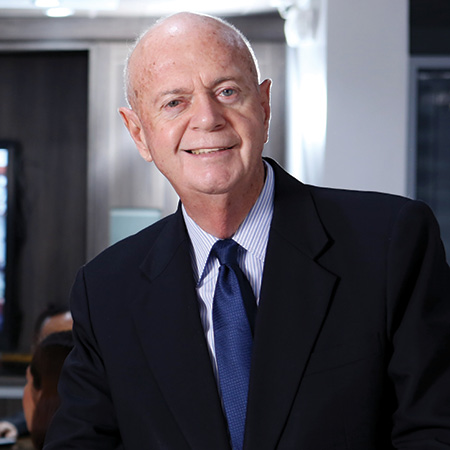
Great Article.